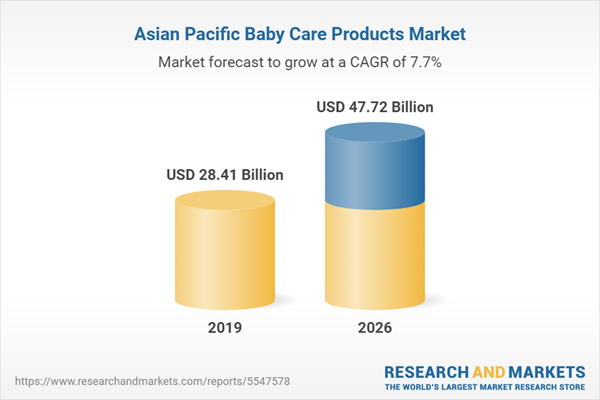Increasing Population in Asia- Pacific to play a key role:
The growing population is expected to be the key driver of the Asia Pacific baby care products market growth. As per Worldometer estimates, Asia alone is the home to around 4.6 billion people which covers around 56.76% of the world's population. The region includes the world's 2 most populous countries: China and India and the growth of the baby care product market is expected to be very strong here owing to the favorable demographic patterns here. With the rise in population, this region has also witnessed a substantial rise in literacy rate which is expected to be the key contributor to the rising awareness about child healthcare and thus is expected to boost up the market in the coming years.
Besides that, increasing disposable income in the region is expected to be a key contributor to the growth of the Asia Pacific baby care products market as it is the major factor that determines the living standard of families which in turn affects their spending on child healthcare and baby care products as well.
Safety concerns associated with the baby care products remains a key challenge:
When it comes to baby care products, safety concern is the major priority of parents. This is because baby needs are different from that of an adult and their body is much more sensitive than that of adults. Skin allergies, infections, contact with chemicals, etc. are certain healthcare issues related to baby products which at times can make them highly vulnerable to disease and infections. Chemical substances present in the products like baby oils, baby creams, baby wipes, etc. can at times become unsuitable for their skin and these issues stop parents from purchasing baby care products. This factor therefore can become a restraint to the market growth in the coming years.
Organic and natural segment to play a key role:
With the growing concerns related to the safety of baby care products, the organic baby products and natural range in them are expected to play a vital role. With the changing trend of higher spending towards organic substances, this segment can play a vital role in the development of the market. The natural and organic products are expected to have the least reactions and considering the sensitivity of the infants, this segment can witness potential growth in the future. After the COVID, the health of children and infants has become a primary motive of the families and the natural segment is expected to drive with it. For instance, recently Indian Pharmaceutical company Glowderma has tied up with Sanosan to import and market their natural baby products like Organic olive oil, hydrolyzed milk protein, etc. in India.
Impact of COVID-19 Pandemic on the Asia Pacific Baby Care Products Market:
With the outburst of the COVID pandemic that increased the hygiene practices among the people, the Asia-Pacific baby care product market was also affected. The increasing hygiene practices and health awareness led the panic buying among the buyers which increased the demand for baby essentials like diapers, wipes, baby food products, etc. As a result of lockdown, shutting down of industries, stringent curfew regulations at some places, lack of labor, and export distortions the supply side failed to meet the demand side but with the bounce-back of industrial production and relaxation in movement accompanied by rising health awareness, the essential baby care products market took on the road of recovery.
Segmentation:
By Product Type
- Baby Food
- Baby Care
- Baby Skin Care
- Baby Hair Care
- Baby Toiletries
- Baby Feeding and Nursing Products
- Safety and Convenience
By Distribution Channel
- Online
- Offline
By Geography
- China
- India
- Japan
- Taiwan
- Australia
- South Korea
- Others
Table of Contents
Companies Mentioned
- Kimberly-Clark
- Procter and Gamble
- Danone
- Abbott
- Bellamy’s Organic
- Pigeon Corporation
- Nestle
- The Himalaya Drug Company
Table Information
| Report Attribute | Details |
|---|---|
| No. of Pages | 98 |
| Published | January 2022 |
| Forecast Period | 2019 - 2026 |
| Estimated Market Value ( USD | $ 28.41 Billion |
| Forecasted Market Value ( USD | $ 47.72 Billion |
| Compound Annual Growth Rate | 7.7% |
| Regions Covered | Asia Pacific |
| No. of Companies Mentioned | 8 |









